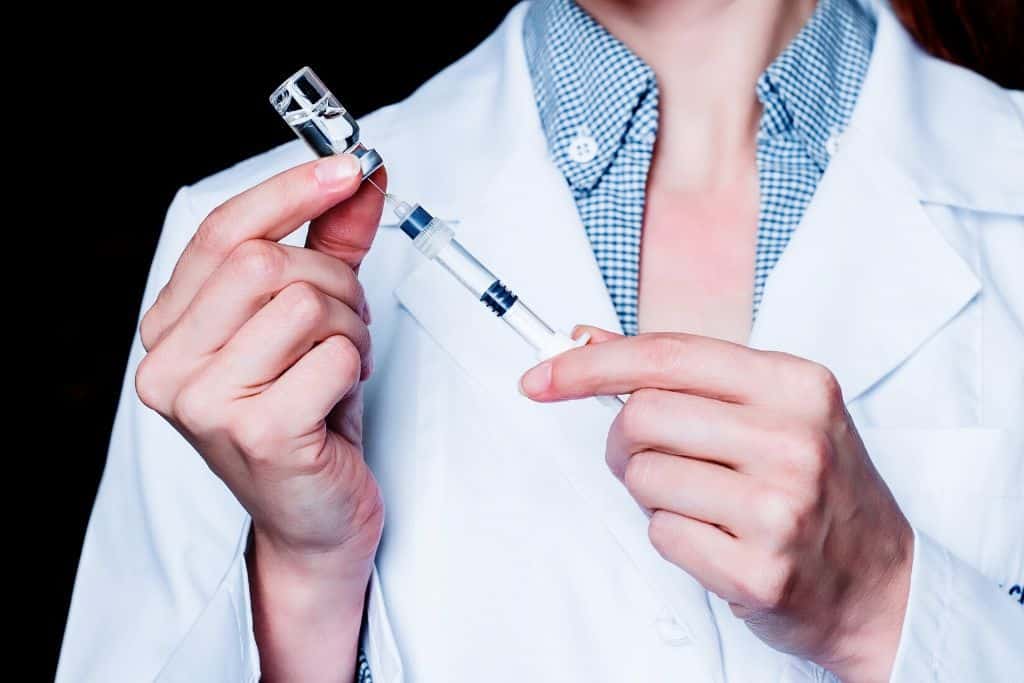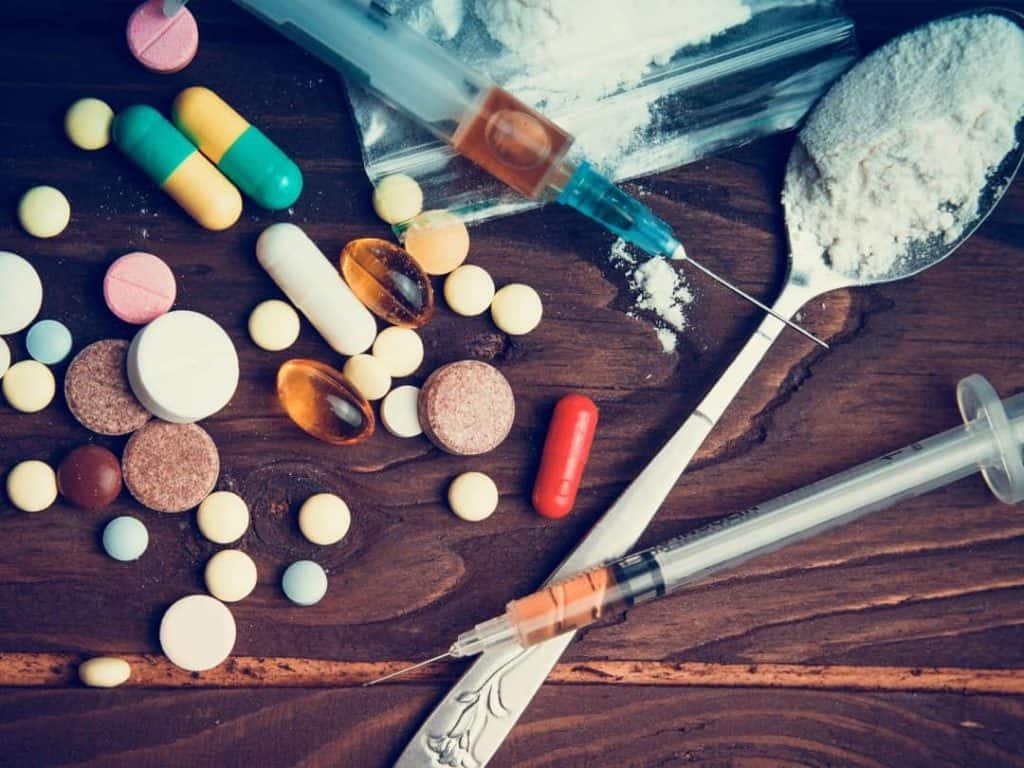Intravenous (IV) drug use involves injecting chemicals into the body through a hypodermic needle into a vein. Drugs can also be injected under the skin (also called “skin popping”) or directly into the muscle (intramuscular injection). For example, heroin is an illegal drug most commonly administered by intravenous injection, but other drugs such as amphetamines, methamphetamines, and cocaine can be helped by IV injection.
Intravenous drug administration is the process of injecting a substance into a vein with a syringe. This route of administration results in rapid and enhanced effects because it bypasses the first-pass metabolism that all orally administered medications undergo. Instead, the medication must be absorbed in the intestines, transported to the liver, and metabolized before being absorbed into circulation. By injecting a drug, it enters the bloodstream immediately, accelerating its delivery to the brain. Due to the rapid onset of the habit-forming drug’s intensely rewarding effects, injecting drugs increases the user’s risk of developing an addiction and the likelihood of experiencing an overdose.
Injection-Related Health Effects
Any method of drug injection – intravenous drug, intramuscular, or subcutaneous – has the potential to cause a slew of adverse health effects, including the following:
- Inflamed and Collapsed Veins
- Puncture Marks/Track Lines
- Skin Infection: Abscesses, Cellulitis, Necrotizing Fasciitis
- Bacteria on the cardiac valves, endocarditis, and other cardiovascular infections
- Swelling of the feet, ankles, and legs secondary to poor peripheral blood flow


Get Your Life Back
Find Hope & Recovery. Get Safe Comfortable Detox, Addiction Rehab & Dual Diagnosis High-Quality Care.
Hotline(844) 597-1011Dangers From Intravenous Drug
While the above are general health risks associated with injections, some additional risks are associated with drugs prepared with various adulterant chemicals, binders, and other toxic substances. For instance, black tar heroin, so named because it has a tar-like consistency, contains a plethora of additives and contaminants. These can contribute to widespread damage to the following organs by causing local inflammation and clogging blood vessels.
- Brain
- Lungs
- Liver
- Kidneys
Because repeated intravenous injections of substances like heroin may induce venous sclerosis or vein loss, addicts often resort to intramuscular or subcutaneous injections.
Intramuscular Injections Risk
- Necrotizing Fasciitis: A severe skin infection caused by bacteria that kills the tissue in the body. This can cause a user to lose their limbs.
- Wound Botulism: Clostridium botulinum, which enters a wound caused by a needle puncture, can lead to paralysis and death.
- Gas Gangrene: This potentially fatal infection is often caused by Clostridium perfringens and can lead to tissue death.
- Tetanus: Caused by Clostridium tetani, this infection can cause lockjaw, problems swallowing, rigid muscles in the abdomen, and stiffness in the neck.
Get Help. Get Better. Get Your Life Back.
Searching for Accredited Drug and Alcohol Rehab Centers Near You?
Even if you have failed previously and relapsed, or are in the middle of a difficult crisis, we stand ready to support you. Our trusted behavioral health specialists will not give up on you. When you feel ready or just want someone to speak to about therapy alternatives to change your life call us. Even if we cannot assist you, we will lead you to wherever you can get support. There is no obligation. Call our hotline today.
(844) 597-1011Dangers Of Shaking Needles
Many people suffering from drug addiction do not take the necessary safety precautions when shooting up; they often share needles, exposing and exchanging bodily fluids and subsequent infectious diseases.
Those who share needles are at risk of contracting the following:
- HIV
- Hepatitis B and C
- Tuberculosis
- Multitudes of other blood-borne bacterial, fungal, and viral infectious agents
To help prevent the spread of these diseases, needle exchange programs have been established that provide free sterile syringes to intravenous drug users. Additionally, they collect used and contaminated syringes to prevent the spread of infection. These needle exchange programs are located throughout the United States and Puerto Rico. These programs typically distribute alcohol pads and condoms in addition to clean needles.
Long-Term Health Risks
Chronic intravenous drug users face the possibility of developing long-term health complications due to their continued and persistent use. Although different types of drugs carry varying long-term health risks, the following are some examples of possible side effects:
- AIDS as a result of HIV
- Malnourishment
- Severe weight loss
- Increased risk of suicide
- Stroke
- Seizures
- Convulsions
- Coma
- Sexual dysfunction
- Decay of white matter in the brain. (Negatively impacts behavioral regulation and decision-making.)
- Psychosis
- Cardiovascular Disease
- Heart Failure
- Chronic hepatitis leading to liver cancer or cirrhosis

Another risk associated with intravenous drug use is overdosing, which is all-too-common with this route of administration. The World Health Organization (WHO) reports that injection drug users face a greater risk of death than non-users, primarily due to overdose and HIV/AIDS-related mortality. Additionally, those living with HIV face a greater risk of death when injecting — not only from HIV-related causes but also from an overdose.
First-class Facilities & Amenities
World-class High-Quality Addiction & Mental Health Rehabilitation Treatment
Rehab Centers TourRenowned Addiction Centers. Serene Private Facilities. Inpatient rehab programs vary.
Addiction Helpline(844) 597-1011Proven recovery success experience, backed by a Team w/ History of:
15+
Years of Unified Experience
100s
5-Star Reviews Across Our Centers
10K
Recovery Success Stories Across Our Network
- Low Patient to Therapist Ratio
- Onsite Medical Detox Center
- Comprehensive Dual-Diagnosis Treatment
- Complimentary Family & Alumni Programs
- Coaching, Recovery & Personal Development Events
Systemic Involvement
The effects on the body systems will vary based on the type and quantity of drugs injected intravenously. The following information about the systemic impact of heroin and cocaine use is based on the National Institute on Drug Abuse (NIDA) publications.

Heroin
Heroin, an opioid drug, will act on the nervous system when it binds to MORs (mu-opioid receptors), thus releasing dopamine to trigger a rewarding pleasure sensation. As a result, the following short-term effects are commonly seen with heroin use: flushed skin, dry mouth, a feeling of heavy limbs, itching of the skin, drowsiness, nausea, and vomiting. Heroin also affects the brain stem, causing a decrease in respiratory and heart rates.
In addition, in the several hours following injection, a heroin user will likely experience mental confusion and impaired judgment. Long-term heroin use has multiple systemic effects.
- Hormonal imbalances occur with long-term use and are not easily reversed. As a result, women may experience amenorrhea, while men may develop sexual dysfunction.
- The limbic system in the brain is affected so that depression, mood swings, and antisocial personality disorder may develop over time.
- The integumentary system is affected by repeated injection sites, leading to skin scarring and increased risk of bacterial infections.
- The vascular system is affected when veins collapse with regular injections and vessels clogging with unknown additives mixed into the injected drugs.
- The immune system may respond to these novel additives in the drugs by developing arthritis or other rheumatic diseases.
- The withdrawal will occur with long-term use if the drug is taken away in several hours.
- The psychosocial domain of a heroin user is affected by an intense need to seek more of the drug at all costs. This leads to a decrease in the function of the individual and a reduction in overall health.
Cocaine
Cocaine, like heroin, affects the part of the brain that causes the release of dopamine to produce a pleasurable “rush.” Cocaine is a stimulant, so its short-term effects on an individual include increased energy, alertness, sensations, and talkativeness. The user has a reduced need for sleep and food intake. Physiological effects on the nervous system cause dilated pupils, constricted blood vessels, increased body temperature, heart rate, and blood pressure, and the long-term systemic effects of cocaine use include malnourishment and weight loss due to the user’s decreased appetite.
In addition, cocaine is highly addictive; it can have a severe long-term effect on the user’s mental health. Anxiety, paranoia, hallucinations, irritability, and even psychosis can develop as the user loses touch with reality searching for more drugs. As with heroin use, cocaine injection can lead to the same risks of infection and blood vessel collapse from repeated injections.
World-class, Accredited, 5-Star Reviewed, Effective Addiction & Mental Health Programs. Complete Behavioral Health Inpatient Rehab, Detox plus Co-occuring Disorders Therapy.
CALL(844) 597-1011End the Addiction Pain. End the Emotional Rollercoaster. Get Your Life Back. Start Drug, Alcohol & Dual Diagnosis Mental Health Treatment Now. Get Free No-obligation Guidance by Substance Abuse Specialists Who Understand Addiction & Mental Health Recovery & Know How to Help.
Medications
Medications used to treat heroin abuse are as follows:
- Methadone: Methadone is a slow-acting opioid agonist. Although it affects opioid receptors, it does not produce a pronounced “high.” Methadone also prevents symptoms of withdrawal.
- Buprenorphine: A partial opioid agonist. Buprenorphine relieves cravings without producing a “high” or other dangerous side effects. Buprenorphine also includes naloxone.
- Naloxone: An opioid antagonist. It blocks opioid action and is not sedating and does not cause dependence.
There are several medications understudy for the treatment of cocaine abuse and withdrawal:
- Baclofen: A muscle relaxer is shown to reduce the amount of dopamine released by cocaine use.
- Tiagabine: A seizure medication that was moderately effective for improving abstinence in cocaine and opiate users.
- Disulfiram: A medication used for alcoholism that makes the side effects of alcohol very unpleasant has also been shown to increase anxiety in cocaine users to intolerable levels.
Prevention
If you or someone you know is an intravenous drug user, there are some ways to reduce the harm of needle injecting. Syringe exchange programs can help prevent the spread of infections and will frequently offer preventative services, such as:

- Counseling
- Testing for HIV, Hepatitis C, STDs, and tuberculosis
- Referrals to drug addiction treatment programs
- Hepatitis A and B vaccinations
These needle exchange programs can aid in harm reduction by either preventing a user from contracting an infection or preventing them from spreading one to others. In addition, these programs will often refer users to drug addiction treatment programs to work towards achieving and maintaining sobriety. Some examples of drug addiction recovery programs include:
- Inpatient Treatment: These programs require that you live at the facility for the duration of the treatment program while receiving services, such as detox, therapy, group counseling, medical maintenance, and aftercare planning.
- Outpatient Treatment: These programs work around your schedule, so you don’t have to abandon your home, work responsibilities to receive rehab services. They may not be suitable for those suffering from severe drug addiction.
- 12-Step Programs: Fellowships, such as Cocaine Anonymous, Narcotics Anonymous, Heroin Anonymous, and Crystal Meth Anonymous, provide a supportive and encouraging environment to share your story and learn from the experiences of others.
- Individual Therapy: A therapist will use various techniques to help you uncover the underlying issues related to your addiction and help you build coping skills to be used in stressful situations.
- Group Counseling: A group counselor will facilitate an interactive session focused on interpersonal interaction and personal growth while encouraging coping strategies.
If you or someone you know is struggling with drug addiction, help is available around the clock. At We Level Up Treatment Center provides world-class care with medical professionals available to help you cope. Call today to speak to a trained professional about which recovery program is best for you. We work as an integrated team providing information about intravenous drugs and other aspects of treatment. Make this your opportunity to reclaim your life.
Your call is private and confidential, and there is never any obligation.
Experience Transformative Recovery at We Level Up Treatment Centers.
See our authentic success stories. Get inspired. Get the help you deserve.
Start a New Life
Begin with a free call to an addiction & behavioral health treatment advisor. Learn more about our dual-diagnosis programs. The We Level Up Treatment Center Network delivers recovery programs that vary by each treatment facility. Call to learn more.
- Personalized Care
- Caring Accountable Staff
- World-class Amenities
- Licensed & Accredited
- Renowned w/ 100s 5-Star Reviews
We’ll Call You
Sources
- NIDA – (2014, October). Retrieved May 02, 2016, from https://www.drugabuse.gov/publications/drugfacts/heroin
- Medscape. Injecting drug use. http://emedicine.medscape.com/article/286976-overview (accessed March 25, 2014).
- National Institute on Drug Abuse. Research report series: heroin. http://www.drugabuse.gov/sites/default/files/rrheroin-14.pdf (accessed March 24, 2014)


